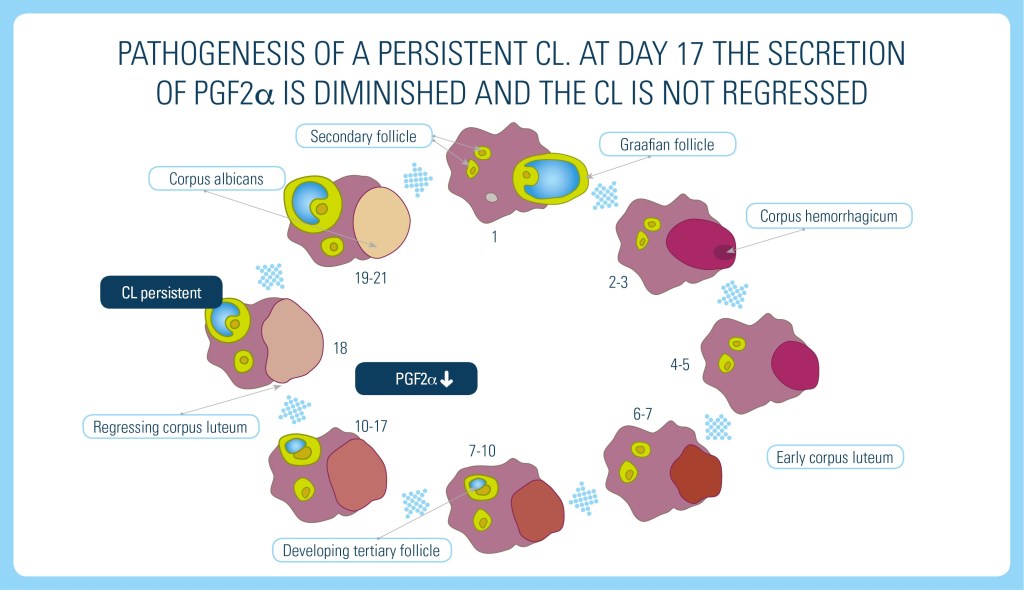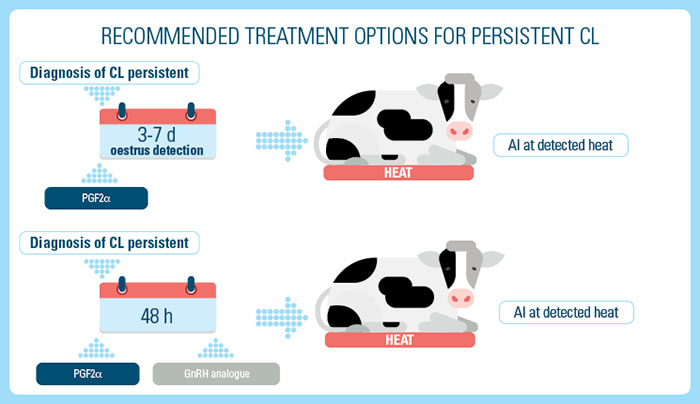

Persistent Corpus Luteum
A cow with a corpus luteum beyond day 20 is due to an inadequate secretion of the luteolytic factor, PGF2α.

At approximately day 17, PGF2α secretion is diminished, and the CL is not regressed. It is persistent, and the follicles do not ovulate.
- Uterine infections, including pyometra
- High milk production especially in early postpartum period
- Prolonged treatment with drugs interfering with prostaglandin pathways (NSAIDs, glucocorticoids)1
When experiencing persistent corpus luteum, cows are not in heat and can be mistakenly considered as pregnant.
Active luteal tissue presence on the ovary leads to the anovulatory state where growing follicles of consecutive waves proceed to dominance but fail to ovulate.
Cows can be treated with luteolytic doses of PGF2α. This can be combined with a dose of GnRH analogue approximately 48-56 hours later to stimulate ovulation.
Cows can be inseminated in the induced heat.

- Von Krueger, X., Heuwieser, W. 2009. Effect of nonsteroidal anti-inflammatory drugs (NSAIDs) on fertility in cattle A review. Tierarztliche Praxis Ausgabe G: Grosstiere – Nutztiere. 37. 7-16.

